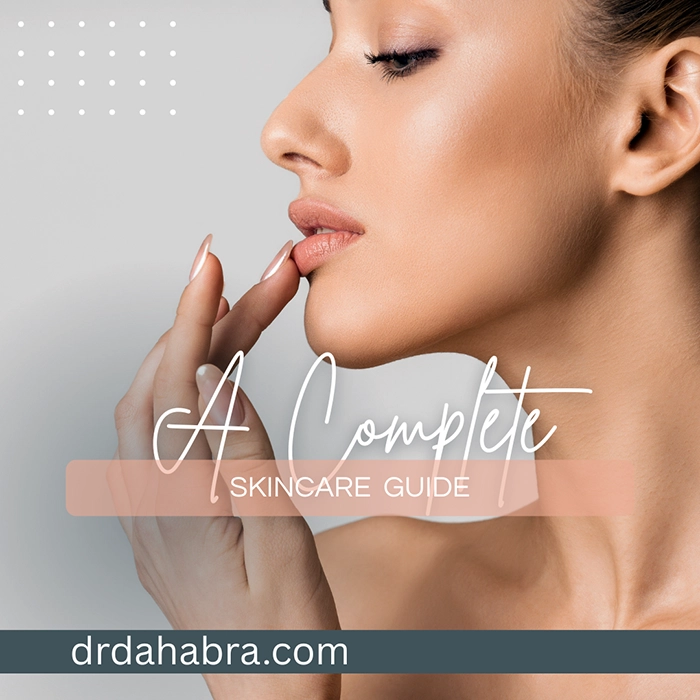The Ultimate Botox Guide for Frown Lines: Benefits, Risks, and Lasting Results
Understanding Frown Lines: Causes and Common Myths
Frown lines are those vertical lines that appear between your eyebrows, often deepening as you age or due to repetitive facial expressions. We will talk about the ultimate guide to Botox for frown lines.
These lines can be caused by the habitual action of muscles under the skin, particularly the glabellar muscles, which contract when we frown or squint. Over time, these repeated motions can lead to permanent creases that can make a person look stern or tired.
A common myth about frown lines is that they only appear in people who frown often. However, genetics, skin type, and overall muscle tension also play roles.
Some people are naturally more predisposed to developing these lines even if they don’t frown frequently. Environmental factors, such as sun exposure and smoking, can also contribute by breaking down collagen and elastin in the skin.
Understanding these causes lets you see why Botox is particularly effective for treating frown lines. It works by temporarily paralyzing the muscles responsible for frowning, helping to smooth out the lines without impacting other areas of expression.
Table of Contents
1. What Is Botox and How Does It Work on Frown Lines?
2. Botox for Frown Lines: Key Benefits You Need to Know
3. Is Botox Safe? Debunking Safety Concerns and Misconceptions
4. How Long Does Botox Last for Frown Lines?
5. How Botox Injections Are Done: Step-by-Step Procedure
6. Who Is an Ideal Candidate for Botox for Frown Lines?
7. Preparing for Your Botox Appointment: What to Expect
8. Potential Side Effects and How to Manage Them
9. Botox Aftercare: Maximizing the Effects of Your Treatment
10. Comparing Botox with Other Treatments for Frown Lines
11. Cost of Botox for Frown Lines and Factors Affecting Price
12. Tips for Finding a Qualified Botox Specialist
13. Realistic Expectations: What Botox Can and Cannot Do
14. Frequently Asked Questions (FAQs)
15. Conclusion: The Ultimate Guide to Botox for Frown Lines
16. Transform Your Look By Getting Rid of Frown Lines
17. References
1. What Is Botox and How Does It Work on Frown Lines?
Botox is a purified protein derived from the bacterium Clostridium botulinum.
When used in tiny doses, it can relax targeted muscles, effectively reducing their movement and the appearance of frown lines. The active ingredient in Botox, botulinum toxin, works by blocking signals from nerves to muscles, preventing those muscles from contracting as forcefully.
In terms of frown lines, Botox is injected directly into the glabellar muscles, which relaxes them and smooths the skin above. Because these muscles are paralyzed, they no longer form the deep creases that would otherwise appear with expressions.
Although results are temporary, Botox is incredibly effective, with visible improvements lasting several months.
Botox only affects specific muscles, meaning other facial expressions, like smiling or raising eyebrows, remain unaffected. This precision makes Botox a trendy choice for frown lines, offering a natural look when administered correctly.
2. Botox for Frown Lines: Key Benefits You Need to Know
Botox provides benefits for those looking to smooth out frown lines. The primary advantage is its ability to offer visible results with minimal downtime.
Within a few days, you can expect a more relaxed, refreshed appearance, with maximum results visible around two weeks after treatment. This makes Botox particularly appealing for those looking for quick results without surgery.
Another benefit of Botox is its preventive potential. Regular treatments can help delay the development of deeper lines, which might require more intensive treatments later on.
Botox inhibits the movement of muscles that contribute to frown line formation, essentially “training” these muscles to be less active over time.
Lastly, Botox for frown lines is versatile and customizable. Whether you’re seeking subtle or more pronounced changes, a qualified practitioner can adjust the dose to fit your aesthetic goals.
This versatility has helped Botox become a mainstay in anti-aging treatments worldwide.
3. Is Botox Safe? Debunking Safety Concerns and Misconceptions
The safety of Botox has been studied extensively, and it has a strong safety profile when administered by qualified professionals.
Many people worry about the “toxicity” of Botox, but the product is carefully purified and prepared in safe doses for medical and cosmetic use. FDA-approved since 2002 for cosmetic applications, Botox has been used by millions worldwide with few severe side effects reported.
Concerns about “frozen” or unnatural expressions are primarily a result of improper technique rather than an inherent issue with Botox itself. Botox can look natural when injected correctly, preserving your facial expressions while simply smoothing out specific lines.
Finding a skilled and experienced practitioner is critical to achieving these results safely.
It’s also worth noting that Botox has been used for various medical treatments, such as for chronic migraines and muscle disorders, further reinforcing its safety when used appropriately. Knowing the proper dosage and placement is critical for avoiding side effects and achieving optimal outcomes.
4. How Long Does Botox Last for Frown Lines?
Botox results for frown lines typically last between three to six months, though this can vary depending on factors like age, skin type, and the frequency of treatment. For most people, the full effects start to fade after three to four months, at which point they may choose to return for a touch-up.
Factors that affect how long Botox lasts include muscle strength and metabolism. Some people may metabolize Botox more quickly than others, leading to shorter-lasting effects.
Consistent treatments, however, can help extend the effects by weakening the treated muscles over time.
You can effectively manage frown lines by committing to long-term regular Botox appointments. These treatments can continuously improve when appropriately scheduled, with each session building upon the last for enduring smoothness.
5. How Botox Injections Are Done: Step-by-Step Procedure
Getting Botox injections is relatively quick, often taking 10 to 15 minutes.
The practitioner will assess your frown lines and determine the appropriate injection sites. They inject small doses of Botox into the glabellar muscles using a fine needle, focusing on precise areas to achieve the best results.
Most people report mild discomfort during the procedure, often described as a slight pinch or prick. To minimize pain, some practitioners may offer a topical numbing cream or use ice before the injection.
Following the injection, there’s no need for downtime; patients can resume their normal activities almost immediately.
Results start to show within a few days, with maximum effect appearing in about two weeks. Following the procedure, some may experience mild redness or swelling at the injection sites, but these side effects are temporary and typically resolve within hours.
6. Who Is an Ideal Candidate for Botox for Frown Lines?
The ideal candidate for Botox is someone who has visible frown lines or is looking to prevent these lines from becoming more profound.
Generally, Botox is suitable for individuals in their late 20s and older who notice signs of aging in the glabellar region. Those with mild to moderate lines are excellent candidates, as they will likely see the most noticeable improvements.
People considering Botox should be healthy and have realistic expectations about what Botox can achieve. Those with certain medical conditions or who are pregnant or nursing should avoid Botox or consult with their doctor for advice on alternative treatments.
Botox is an effective option for individuals who wish to avoid more invasive procedures, like surgery, for managing their frown lines. Its minimally invasive nature and quick recovery make it highly suitable for busy individuals looking to improve their appearance without significant downtime.
7. Preparing for Your Botox Appointment: What to Expect
Before your Botox appointment, there are a few preparatory steps to help ensure a smooth experience and optimal results.
Firstly, your practitioner may advise you to avoid blood-thinning medications, such as aspirin or ibuprofen, for about a week prior. These medications can increase the likelihood of bruising post-injection.
Herbal supplements like ginkgo biloba, vitamin E, and omega-3 oils should also be avoided for similar reasons.
Staying hydrated and getting adequate rest before your appointment can help your skin appear more plump and receptive to the treatment. Many people find that eating a small snack beforehand helps minimize any light-headedness or nervousness.
Additionally, some practitioners recommend avoiding alcohol for at least 24 hours before treatment to reduce the chance of bruising further.
During your appointment, your doctor will review your medical history, address any concerns, and map out the precise areas to treat. A topical anesthetic may enhance comfort, though most patients report minimal discomfort.
Being well-prepared can make a difference in your overall experience, helping you approach the procedure with confidence and ease.
8. Potential Side Effects and How to Manage Them
Botox is generally well-tolerated, but there are potential side effects like any medical procedure. The most common ones include mild bruising, redness, or swelling at the injection sites.
These side effects typically subside within a few hours or days. A cold compress post-treatment can help reduce swelling and soothe the treated area.
Some patients experience minor headaches or temporary discomfort around the injection sites. These are usually short-lived and can be managed with over-the-counter pain relievers.
On rare occasions, Botox may cause temporary eyelid drooping, which occurs when the toxin affects nearby muscles. However, this effect usually resolves on its own within a few weeks and can be minimized by choosing an experienced injector.
Understanding potential side effects and following your provider’s guidance can help you navigate the Botox experience smoothly. Your practitioner will give you detailed instructions on managing any side effects effectively, so don’t hesitate to reach out if you have concerns following your treatment.
9. Botox Aftercare: Maximizing the Effects of Your Treatment
After receiving Botox for frown lines, practicing proper aftercare is essential for ensuring lasting and natural results. Immediately after the procedure, avoiding touching or massaging the treated areas is recommended, as this can spread the Botox to unintended muscles, potentially affecting other facial expressions.
Additionally, avoid lying down for at least four hours post-treatment to prevent any unwanted movement of the injected substance.
Physical activity should be limited for the first 24 hours, as exercise can increase circulation and potentially cause the Botox to wear off faster. Likewise, it’s best to avoid exposure to heat, such as saunas or hot baths, as it may affect the absorption rate of the product.
Keeping your skin hydrated and protected from direct sunlight is also crucial in maintaining the effects of Botox. Sun exposure can contribute to the development of fine lines and reduce the longevity of your treatment.
Following these aftercare steps can help you enjoy the full benefits of your Botox treatment for as long as possible.
10. Comparing Botox with Other Treatments for Frown Lines
While Botox is one of the most popular treatments for frown lines, several alternatives exist, each with benefits and limitations. Dermal fillers, for example, offer an option for filling in deeper lines and providing instant volume.
Unlike Botox, which targets muscle activity, fillers work by adding hyaluronic acid-based volume directly under the skin. Fillers can be a good choice for static lines, but they may be less effective for dynamic frown lines caused by muscle movement.
Other treatments, like chemical peels and laser resurfacing, can improve skin texture and reduce fine lines, but they do not address the underlying muscle movements that cause frown lines. These treatments are often used in combination with Botox for a more comprehensive anti-aging strategy.
For those interested in non-injectable options, anti-aging creams with retinoids or peptides can be effective for mild frown lines but generally require consistent use over time.
Understanding how Botox compares with other options can help you make an informed decision based on your goals, budget, and tolerance for invasive treatments.
11. Cost of Botox for Frown Lines and Factors Affecting Price
The cost of Botox for frown lines varies widely based on factors like the amount of Botox required, the provider’s experience, and the clinic’s geographic location.
Botox treatments for frown lines can cost anywhere from \$200 to \$600 per session, depending on the number of units needed. Some providers charge by the unit, with an average price per unit ranging from $10 to $20, while others may charge a flat fee for the entire treatment area.
Factors like clinic location can significantly impact price, with treatments in major metropolitan areas often costing more than in rural areas. Additionally, practitioners with extensive experience and high patient demand may charge a premium for their services.
It’s also worth considering any potential discounts or package deals for multiple treatment sessions, as some clinics offer reduced rates for clients who book in advance or for ongoing Botox maintenance.
Weighing these factors can help you budget for Botox and find the best option for your financial and aesthetic goals.
12. Tips for Finding a Qualified Botox Specialist
Finding a qualified Botox specialist is crucial to achieving safe and satisfying results.
Start by researching board-certified dermatologists or plastic surgeons with extensive Botox injection experience. Certification ensures your provider has undergone the necessary training and adheres to industry standards.
You can also look for specialists who focus specifically on facial aesthetics, as they are more likely to have an in-depth understanding of facial anatomy.
Reading reviews and viewing before-and-after photos can provide insight into the practitioner’s skill and patient satisfaction. Additionally, booking a consultation is a great way to assess their professionalism, communication style, and approach to Botox treatments.
Ask about their injection techniques, safety protocols, and aftercare guidelines during your consultation to gauge their expertise.
Avoid “Botox parties” or non-medical spas where the standards and safety protocols may not meet industry requirements. Prioritizing a licensed, experienced professional can make all the difference in achieving natural-looking, effective Botox results.
Get in touch with me for any recommendations.
13. Realistic Expectations: What Botox Can and Cannot Do
Botox can provide remarkable results for frown lines, but it’s essential to have realistic expectations about what it can achieve. Botox works by relaxing the underlying muscles, which smooths out dynamic lines that appear with movement.
For many, this leads to a younger, more refreshed appearance, but it’s important to remember that Botox does not fill deep creases or address other signs of aging like skin laxity or sun damage.
Furthermore, the effects of Botox are temporary, lasting three to six months on average. Regular maintenance is necessary to sustain the results over time.
It’s also worth noting that while Botox can significantly reduce frown lines, it may not eliminate them, especially in cases where the lines are deeply etched due to years of repeated facial expressions.
Managing your expectations and understanding Botox’s capabilities can help you appreciate its benefits while remaining realistic about potential outcomes.
Botox offers a subtle, natural enhancement rather than an overnight transformation, making it an excellent option for those seeking gradual, consistent improvement.
14. Frequently Asked Questions (FAQs) About The Ultimate Guide to Botox for Frown Lines
Q1. How soon will I see results from Botox for frown lines?
Concise Answer: You’ll typically see initial results within three to five days, with full effects visible in two weeks.
Detailed Answer: After a Botox treatment for frown lines, most people start noticing improvement in three to five days, though it may take up to two weeks for the full results to appear. Botox works by gradually relaxing the targeted muscles, allowing the skin to smooth out and the frown lines to soften.
Q2. How long do the effects of Botox last on frown lines?
Concise Answer: Botox results for frown lines generally last three to six months.
Detailed Answer: The duration of Botox’s effects can vary depending on factors like individual metabolism, muscle strength, and the number of units used. Most patients find that results last around three to six months, after which muscle activity gradually resumes, and frown lines may reappear, making regular maintenance treatments ideal for sustained results.
Q3. Is Botox painful?
Concise Answer: Botox injections are usually minimally painful, often described as a slight pinch.
Detailed Answer: Most people find Botox injections relatively painless, likening the sensation to a quick pinch or prick. The needles are lovely, and treatments are quick, lasting about 10 to 15 minutes.
Some practitioners offer topical numbing creams to enhance comfort, especially for those sensitive to injections.
Q4. How much does Botox cost for frown lines?
Concise Answer: The cost can range from $200 to $600 per session, depending on location and provider experience.
Detailed Answer: Botox costs for frown lines vary widely based on the number of units needed, practitioner experience, and geographic location. Many providers charge by the unit, with average prices ranging from $10 to $20 per unit.
A typical frown line treatment requires 20 to 30 units, totaling between $200 and $600 per session.
Q5. Are there any side effects of Botox?
Concise Answer: Common side effects include mild bruising, swelling, or redness at the injection sites.
Detailed Answer: Botox is generally well-tolerated, but some patients may experience mild side effects like bruising, swelling, or redness at the injection sites. These usually resolve within a few hours to a few days.
Rare side effects include headaches, temporary drooping, or flu-like symptoms, which are uncommon and usually temporary.
Q6. Can I go back to work right after a Botox treatment?
Concise Answer: You can usually return to work immediately after treatment.
Detailed Answer: Botox treatments are quick and have minimal downtime, making it easy to resume most normal activities, including work, right after. However, you may be advised to avoid intense physical activity, lying down, or touching the treated area for a few hours to allow the Botox to settle correctly.
Q7. Can Botox altogether remove deep frown lines?
Concise Answer: Botox can significantly reduce deep frown lines but may not remove them entirely.
Detailed Answer: While Botox softens frown lines by relaxing the underlying muscles, well-established deep lines may not disappear completely. In some cases, combining Botox with fillers or other treatments may help achieve a smoother look for these deeper creases.
Q8. How often should I get Botox for frown lines?
Concise Answer: Most people schedule treatments every three to six months to maintain results.
Detailed Answer: Regular treatments are recommended every three to six months as the effects of Botox wear off gradually. Frequent treatments can train the muscles to remain relaxed, extending the longevity of results and reducing the frequency of injections over time.
Q9. Are there any long-term risks of Botox?
Concise Answer: When administered correctly, the long-term risks of Botox are minimal.
Detailed Answer: Long-term risks are rare with Botox, especially when a qualified professional does injections. Botox does not build up in the body; its effects wear off over time. Some patients who get frequent Botox may experience a slight weakening of treated muscles, but this is usually temporary and can revert if treatments are stopped.
Q10. Can Botox prevent future wrinkles from forming?
Concise Answer: Botox can help prevent new wrinkles by relaxing muscles that cause expression lines.
Detailed Answer: By limiting the movement of muscles responsible for frown lines, Botox can reduce the development of new wrinkles and prevent existing lines from deepening. Many people start Botox in their late 20s or early 30s for this preventive effect, helping to maintain a smoother appearance over time.
Q11. Will Botox make my face look frozen or unnatural?
Concise Answer: Botox can look natural without affecting other expressions with a skilled practitioner.
Detailed Answer: When performed by an experienced professional, Botox can provide a subtle, natural look by targeting specific muscles while preserving natural expressions. The “frozen” look often results from improper technique or excessive dosing, making choosing a qualified practitioner for optimal results essential.
Q12. Can I combine Botox with other facial treatments?
Concise Answer: Botox can be safely combined with other treatments like fillers and chemical peels.
Detailed Answer: Botox is often combined with dermal fillers, chemical peels, or laser treatments for a comprehensive anti-aging approach. Combining treatments can enhance overall results, such as adding volume to the skin while smoothing out wrinkles. Still, it’s essential to consult your practitioner to plan the best approach for timing and effectiveness.
Q13. How can I make the effects of Botox last longer?
Concise Answer: Following aftercare instructions and maintaining a healthy lifestyle can help prolong Botox results.
Detailed Answer: To maximize the longevity of Botox, avoid strenuous exercise, sun exposure, and massaging the treated area right after your treatment. Staying hydrated, managing stress, and maintaining a balanced diet can also support skin health and help you enjoy the effects of Botox for as long as possible.
Q14. Can anyone get Botox, or are there restrictions?
Concise Answer: Botox is suitable for most healthy adults, but some conditions may prevent its use.
Detailed Answer: While Botox is safe for adults, certain conditions may make it unsuitable. Pregnant or breastfeeding women, individuals with neuromuscular disorders, or those with specific allergies may need to avoid Botox. Always disclose your complete medical history to your practitioner to ensure it’s safe.
Q15. Is there a recommended age at which to start Botox for frown lines?
Concise Answer: There is no set age, but many people begin in their late 20s to 30s for preventive effects.
Detailed Answer: Botox is effective for treating existing frown lines and preventing new ones, so the best age to start depends on individual goals. Many begin Botox in their late 20s or early 30s to prevent lines from forming, while others may start later when they notice more pronounced wrinkles. Consulting with a provider can help determine the ideal timing for your skin type and aging goals.
15. Conclusion: The Ultimate Guide to Botox for Frown Lines
Botox has become a go-to solution for those seeking a smoother, youthful look by effectively reducing frown lines. The process is quick, minimally invasive, and offers impressive results without downtime. With proper care and consistent treatments, Botox provides a powerful tool in the fight against visible signs of aging.
Understanding the factors contributing to frown lines can help you make an informed choice about Botox. Finding a qualified practitioner to ensure safe, natural-looking results tailored to your goals is essential. Botox’s unique ability to prevent further deepening of lines highlights its potential as a corrective and preventive treatment.
Knowledge is key in exploring Botox for the first time or looking to continue with regular treatments. Equipped with this ultimate guide, you can confidently approach your Botox journey, achieving your desired refreshed and relaxed appearance.
We have covered everything about the ultimate guide to Botox for frown lines.
16. Transform Your Look By Getting Rid of Frown Lines
Experience the revolutionary power of the frown lines removal treatment in Florida. Our state-of-the-art treatment revitalizes and rejuvenates, offering you a path to radiant, youthful skin. Why wait to unlock your best self?
Call us now at (954) 595-2607 or book online. Your journey to flawless skin begins with just a click or a call.
Embrace the beauty, embrace innovation – Embrace You.
17. References
- Dr. Chadi Dahabra
- Plantation Med Spa
- West Palm Beach Med Spa
- Beverly Hills Wellness Center & Med Spa
- Botox Injections – Mayo Clinic
- Mayo Clinic Q and A: Botox for wrinkles – is it safe? – Mayo Clinic News Network
- Understanding the Benefits and Risks of Botox for Treating Forehead Lines – Elements Med Spa
- Botox for Wrinkles and Fine Lines – American Society of Plastic Surgeons
- Safety and Long-term Effects of Botox Use – National Institutes of Health (NIH)
- Botox Injection Techniques for the Glabellar Region – Dermatologic Surgery Journal




